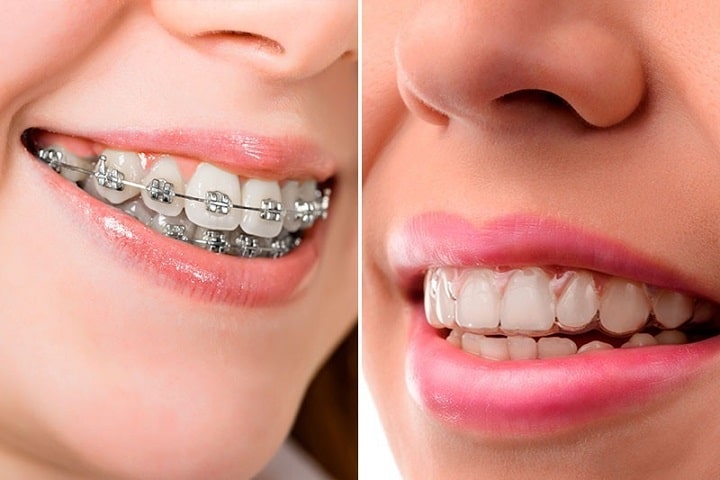Comparison between Invisalign® and Brackets
Invisalign® is an orthodontic technique that uses advanced 3D technology through precision clear aligners that are changed every 7-10 days; While the brackets, better known to all, metallic or transparent are small pieces that are attached to the tooth and joined together by an arch.
What are the differences between Invisalign® and Brackets?
Comfort: the Invisalign® splints can be removed so that they allow us to eat and clean them without difficulty, in addition, it does not rub against the inner part of the lip and does not generate any type of wound; Brackets need more precision cleaning since they are fixed and exceptional hygiene must be maintained. There are foods that we cannot eat with them, such as hard or sticky foods, and they can rub and generate small sores or canker sores on the mucous membranes.
Both treatments can cause minor discomfort at the beginning due to tooth movements, but it takes a few days to adapt.
Collaboration: with the Invisalign® technique we need a lot of collaboration from the patient because it can be removed and it is necessary to use them approximately between 20-22 hours a day for the treatment to be successful; While the brackets cannot be removed, they do not need so much collaboration. In both techniques we will have to use auxiliary elements that do require collaboration from the patient, such as elastics.
Aesthetics: Invisalign® is a very aesthetic technique that is barely visible since it consists of transparent splints and small tooth-colored attachments that are slightly visible; while the brackets are visible as they are metallic, although a more aesthetic option would be the sapphire brackets (transparent).
Time: the duration of the treatment depends on the complexity of the case, normally an orthodontic treatment lasts around a year and a half, two years; but there are shorter Invisalign® treatments according to the needs of each patient, Lite and Express.
Visits to the Orthodontist: visits with a braces treatment will have to be once a month, while with Invisalign® visits can be more spaced depending on the number of splints delivered. Likewise, the possible emergencies are less with Invisalign® than with brackets since these can come off and it would be necessary to re-cement it.
The different appliances are tools and it is the responsibility of the orthodontist know and master the different techniques with a solid base of orthodontic knowledge, biology and biomechanics. There are good and bad treatments with Brackets and Invisalign® or any appliance. The one who does the treatment is the Orthodontist. Therefore The best Technique is to put yourself in the hands of good Orthodontists, such as the OdontoStetic Doctor.
Do you still have doubts? See the section on Invisalign® treatment or Brackets.


